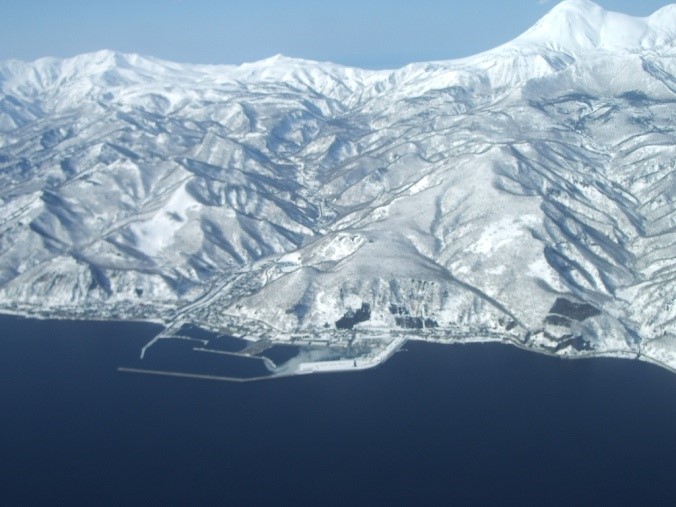Shiretoko
Rausu-chō, Hokkaidō, 086-1806, Japan
The Shiretoko World Natural Heritage Site is comprised by the inland and marine territory in and around Shiretoko Peninsula, Hokkaido, Japan. This subarctic ecosystem, due to the presence of seasonal sea ice, is characterised by high biodiversity, incl. various endangered species. In addition to the endemic species, several migratory species feed and rest in the area. There are continuous interactions between the terrestrial and the marine ecosystems, mostly due to the fact that anadromous species moving upriver in order to spawn, become prey to the local terrestrial predators. The residents of Shiretoko originate from several locations, incl. the Kuril Islands (disputed island complex), mainland Japan, and indigenous Ainu settlements. Shiretoko is divided into two districts, and includes three towns, Shari, Utoro, and Rausu. The whole peninsula is highly reliant on agriculture, fisheries, and tourism, boasting exceptional productivity, especially fishery and dairy products. The area of Shiretoko is suffering from steady depopulation rates, mostly due to aging and the younger generations moving to large urban centres.
Top environmental challenge faced by the community (currently or in the past 10 years):
The Shiretoko marine ecosystems have been impacted by local human activity, such as resource use conflicts between conservation and exploitation and competition among countries with fishing rights (Japan and Russia), and ecosystem change (climate change, water temperature increase, alien species, human impacts). Since the 1990s, many commercial species, such as walleye pollock, masu salmon and common squid, have shown declining trends and the stock of Japanese sardine has collapsed. In addition to fisheries resource depletion, the local marine habitats are also suffering from temperature rise, which, in the Sea of Okhotsk, has resulted in the deterioration of the seasonal ice volume, and has led to changes in fisheries practices, as target species have been migrating to colder water and southern species have been taking over the area.
How the environmental challenge has affected local livelihoods:
Due to the changes that have affected the commercial species, the local fishers have been forced to shift to different target species, that might not be within their field of expertise; they have had to implement fishing gear changes and reductions in fishing time and impose upon themselves significant regulatory barriers in order to preserve the local livelihoods threatened by the collapsed and declining stocks.
Community response to the challenge, through environmental stewardship (conservation) initiatives that improve environmental well-being and support sustainable livelihoods:
In the context of immediate threats to the health of the local environment and the well-being of the communities in Shiretoko in the 1990s, solutions towards an effective ecosystem-based management framework were sought. Based on the lessons and experiences with the common decentralised Japanese fisheries management system, the Shiretoko area stakeholders developed a unique model for ecosystem conservation, with fishers as the primary decision-makers and the governmental and non-governmental bodies in an advisory role. The fishers take into serious consideration the research outcomes and scientific advice provided by the supporting research institutions. Although they are responsible for the adoption and implementation of fish stock regulations, they value scientific input highly in order to ensure the validity of the decisions that they make. Holding a long tradition of self-implemented conservation actions, the fishers take pride in the protection of the local marine environment, upon which their livelihoods depend. Furthermore, the local community, supported by the local and national governments, see the Shiretoko habitat as an area worth protecting, for they have direct benefit.
The extent to which the response was successful or otherwise:
The Shiretoko Approach has managed to incorporate the fisheries management system in a holistic or ecosystem-based framework that also takes into account the terrestrial parameters of the area. Through the unique management arrangement, multiple opinions are heard during the meetings and information from different sectors is gathered. This type of collaborative approach has proven pivotal for the sustainability of the coastal commons in Shiretoko. The Shiretoko Approach has resulted in significant reduction of fishing pressure and resource management has shifted towards adaptive approaches, allowing for constant re-evaluation of measures and fast adaptation to changing parameters. As a result, the target fish stocks are showing signs of stability and catch fluctuations have been limited. The local livelihoods have been reinforced and the social-ecological system has been building resilience towards larger scale changes like declining drift ice, that need to be tackled at the global level.
Extent to which governmental policy (at local, regional or national levels, as relevant) has supported, or been contrary to, the community's responses to the environmental challenge:
As there is no specific legislation regarding the conservation of World Natural Heritage Sites, the Shiretoko conservation plans are decided and implemented by several bodies together. This process is based on a range of laws, thus creating a new integrated management system based on cross-sector collaboration. In order to develop a working governance structure in Shiretoko, a range of decision-making and supporting bodies were established. All these organisations are functioning based on mutual recognition, extensive collaboration and stakeholder participation, thus promoting knowledge exchange, and forming a forum for the user groups to state their opinions and reach agreement through inclusive debate. This arrangement, which constitutes the core of the Shiretoko Approach, promotes the legitimacy of the management plan adopted. Several national and international bodies provide support to the local arrangement, including the Japanese national government, IUCN and UNESCO, showcasing the potential of the Shiretoko Approach as best practice.
Keywords: Ecosystem
Coastal
Keywords: Resources
Fish
Keywords: Big Issues
Resource use
Keywords: Solutions
Governance/Management, Local/Traditional knowledge
Contributed by: Irianna Vlachopoulou; Mitsutaku Makino
The information provided and opinions expressed above are the responsibility of the contributor and do not necessarily reflect the views and analysis of the Community Conservation Research Network (CCRN), nor those of all members of the community described.
For any questions or comments on Communities in Action, please contact us
here.



